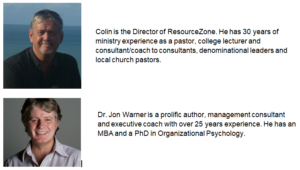
Dr. Jim Asplund, Gallup’s advocate of strengths-based development, recently said: “The best-led organisations know that the direct path to individual, team, and organisational success begins with a primary investment in their employees’ greatest talents.”
This statement not only reflects the Gallup organisation’s view (based on its widespread surveys conducted in the last decade or so) but also reflects a shift in the views of the leadership development world. This is broadly away from a focus on individual “development needs” to be overcome or improved in some way to an approach which aims to leverage an individual’s strengths.
The research conducted by Gallup goes even further in suggesting that a strengths-focused approach to leadership development has the following outcomes:
- If a leader primarily focuses on an individual’s strengths, the likelihood that the individual will be actively disengaged is 1% and people who use their strengths every day are six times more likely to be engaged on the job.
- If a leader primarily focuses on an individual’s weaknesses, the likelihood that the individual will be actively disengaged is 22%.
- Teams that focus on strengths every day have 12.5% greater productivity and teams that receive strengths feedback have 8.9% greater profitability.
- Among individuals who received strengths feedback, turnover rates were 15% lower than for those who did not.
- An individual who regularly applies his or her strengths is 6 times as likely to strongly agree that she has the opportunity to do what she does best every day.
So if these outcomes are to be believed, a strengths-based leadership development approach seems to offer many valuable benefits to both individuals and the organisation.
But how do we go about identifying these strengths? Here are a few questions that we can ask:
- What does a given person do better than anyone else?
- What unique capabilities and resources does the person possess?
- What do others perceive as the person’s strengths?
- What unique personal resources can the person access?
- Of which of the person’s achievements is he or she most proud?
- What are the compliments that the person most often receives?
We can then simply use the responses we gather from asking questions like these to craft our development approach which would seek to deploy these strengths more often and in ways that compensate for any weaknesses or less developed skills that the person may have.
So, in this approach, do we have to worry at all about our so-called “development needs”? Clearly, appreciating a person’s limitations is just as important as understanding their strengths and there is considerable research that tells us that, if we ignore our limitations, it does affect our performance and ultimate success, especially when a person is in a leadership role.
We therefore clearly need to understand our limitations as well as our strengths, how they impact us and whether or not they are holding us back. And, to be consistent, these are the questions that help to identify what those limitations might be:
- What tasks does the person dislike or avoid because he or she may lack confidence?
- What do others perceive as the person’s weaknesses?
- What are the person’s less impressive work habits?
- Where does the person show most resistance?
- What style/ personality traits may hold the person back?
Summary
A strengths-based approach has helped to enrich the individual and leader development process. However, to only focus on strengths, as some organisations are now prone to do, is likely to miss the opportunity to at least appreciate where skills and experience is weaker or less well developed. It is therefore valuable to work with individuals to evolve both perspectives, even when a more strengths-oriented approach is then taken.



